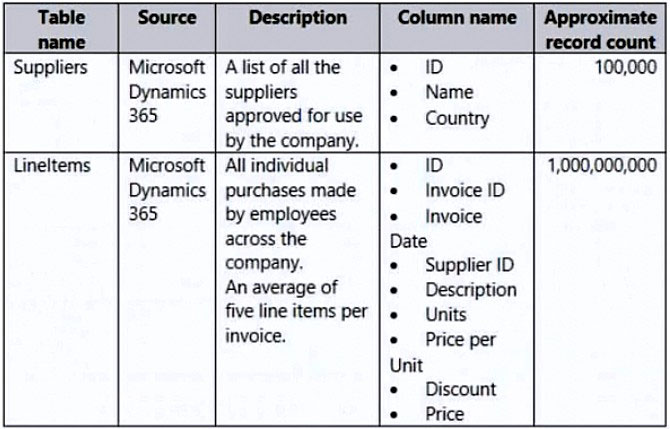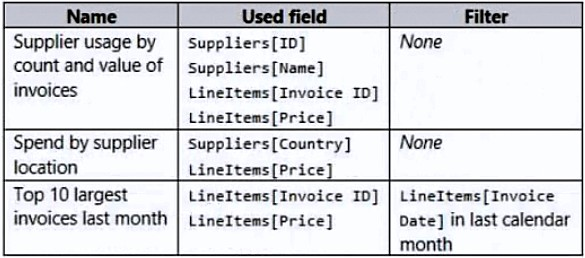

You have a Power BI report for the procurement department. The report contains data from the following tables.
There is a one-to-many relationship from Suppliers to LineItems that uses the ID and Supplier ID columns.
The report contains the visuals shown in the following table.
You need to minimize the size of the dataset without affecting the visuals.
What should you do?
scotchtapebunny
Highly Voted 2 years, 5 months agojsking
2 years, 4 months agoAnnaBi
2 years agoGuerreiroJunior
2 years, 3 months agost418s21
1 year, 9 months agoyordiye
2 years, 3 months agolukelin08
Highly Voted 2 years, 6 months agojaume
Most Recent 5 months, 1 week agorcaliandro
8 months, 1 week agolivine
8 months, 3 weeks agoDsbuff
1 year, 4 months agoKoalakueh
1 year, 5 months agoElieG
1 year, 4 months agoIgetmyrole
1 year, 7 months agoitenginerd
1 year, 7 months agoIngoBI
1 year, 11 months agoIngoBI
1 year, 11 months agoitenginerd
1 year, 7 months agoGumis78
1 year, 5 months agoShalaleh
1 year, 11 months agoUlyUkr
1 year, 12 months agoda66a09
1 year agoRazaTheLegend
2 years agoBabaJee
2 years, 3 months agocsillag
2 years, 4 months agojboiret
2 years, 4 months agoPatrick666
2 years, 4 months agosidyndiaye
2 years, 7 months ago